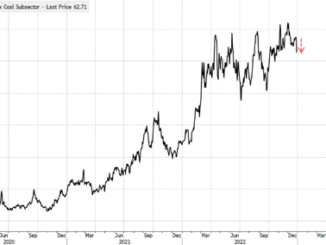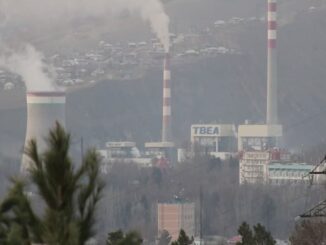![Europe’s broken food system, time to finance resilient and sustainable food systems [Advocacy Lab Content] food systems](https://energynewsbeat.co/wp-content/uploads/2024/11/GettyImages-843649350-450x300-GerLP7.jpeg)
Existing food systems destroy more than they create, and drive a third of global greenhouse gas emissions. But what would it cost for the EU to truly deliver a sustainable food system respecting Europe’s natural resources while bringing farming and food sourcing up to speed with the latest technology?
According to the UN Secretary-General Antonio Guterres, we are “teetering on a planetary tightrope.” A recent report by the UN’s environment programme says the “Climate crunch time is here. We need global mobilisation on a scale and pace never seen before. If not, the 1.5°C goal will take its place in the intensive care unit, and we will face the inevitable catastrophic 3.1 temp rise.”
At a Eurativ event on “Nourishing Europe, Financing the path to resilient and sustainable food systems”, Faustine Bas-Defossez, Director for Nature, Health and Environment, European Environmental Bureau, said: “We must talk about the cost of inaction. A recent study in France showed that the broken food system costs €19 billion a year.”
This, she added: “is just the tip of the iceberg and represents the hidden cost to health and the environment. The system is making consumers sick; it is driving deforestation, pollution in our air and water and depleting soil and biodiversity. Millions of citizens have a poor diet. We need a system change. Technology alone is not enough.”
First 100 days
In its first 100 days, the EU Commission is using ideas generated under a multi-stakeholder consultation, the “Strategic Dialogue on the Future of EU Agriculture”, to shape a new vision that can build upon the key principles of its Farm to Fork Strategy – at the heart of the EU Green Deal – aiming to make food systems fair, healthy and environmentally-friendly.
Its recommendations include strengthening the role of farmers within the chain, a Common Agriculture Policy [CAP] fit for purpose and creating more sustainability in animal farming.
EU farms and industrial agriculture account for 38 per cent of the total land area of the EU. The EU wants to shift away from land-based subsidies towards more support for small farms and incentives for producers who go green. But can today’s farmers support policy ambition?
Working with GenZ
Marion Picot, Secretary General, CEJA Young Farmers, told the Euractiv audience: “We need to work with the new generation, with Gen Z and millennials. They want to have a meaningful impact with what they create and have a strong attraction to business creation, which is great for the future of agriculture.”
“They want to preserve their community, which is key for tackling climate change,” she said, “But there is also a vocational crisis at the heart of the sector. The mental health of farmers is hugely impacted. Estimates suggest there is a 62% financing gap for farmers, and many young farmers are more likely to be rejected by banks for loans.”
Given that black hole for investment, what is the role that public and private partnerships can play?
Financing climate models
Danone is one company that says it is determined to help overcome financial and climate-related challenges by adopting agricultural models that can regenerate the planet while feeding a global population that is set to surpass nine billion people by 2050. Regenerative farming models are at the heart of the support they provide to over 58,000 (primarily dairy) farmers worldwide.
Chris Adamo, Senior Director of Global Sustainability Impact and B Corp, Danone, remarked: “We apply a broad, holistic framework with our regenerative agriculture strategy. We’re not just buying the commodity. We’re partnering with the farms, and so we get to know their specific challenges and what is possible for sustainability and resilience.”
Adamo remarked, “Needs and costs can vary due to things such as pasture or waste management. Our financing assistance is case by case. By getting to know the individual farmer, we can build a long-term relationship.”
But the key question remained: where would the EU find the money from? Some analysts estimate the cost of the transformation at between 0.2% and 0.4% of global GDP per year.
Government cash is not enough.
Martin van Driel, Administrator at DG AGRI, European Commission, explained: “Under the multi-annual financial framework (MFF), we know what funding we have till 2027. But the CAP itself has not been adjusted based on inflation for 20 years, so €57 billion may sound like a lot, but it does a lot less today.”
“Government budgets are not enough – even with state aid, so we need to look at investment via banks and the consumer,” said van Driel.
“The primary sector turnover is €500 billion, and so farmers already earn from the market, from the consumer. Commissioner-designate Cristophe Hansen has a lot to address on the food system and agriculture reform, but the income of farmers is the top priority,” he added.
Given the stretch on finances, the Strategic Dialogue calls for financial actors to leverage the socio-economic opportunities of the food systems transition and mitigate the increasing financial risks. It calls on the European Investment Bank (EIB) to implement a specific group loan package for the sector.
But are the financial hurdles for a sustainable transition too big for farmers to bear? Ceja also supports the idea of a ‘Temporary Just Transition Fund’ (JTF) to be established outside the CAP.
Supporting rural communities
Marion Picot, Secretary General, CEJA Young Farmers, told Euractiv: “In 2019, the EIB put a one billion euros investment package on the table, and it was gone in six months. We have to approach everything with realism and improve existing tools. Under the framework, we spoke about a JTF because, in certain regions, we do not help farmers transition now, it will be very hard to help future generations take over and for older generations to retire with good pensions. We have to support the rural community.”
But even if financial ambition can match sustainable goals, what if the EU’s 27 member states couldn’t implement EU policy due to their national budget constraints following the pandemic and ongoing cost of living crisis?
A current example of this is the non-EU UK. The UK’s new Labour government recently delivered a new national budget that delivered a big blow for generational small farms. Inheritance tax relief would be capped at £1 million. Critics say such a move could wipe out small family-run farms passed down from generations.
Herbert Dorfmann MEP (Italy EPP), and Member AGRI Committee highlighted that Europe has “to invest more in agricultural products and sustainable farming, but the money cannot come from the existing CAP. We need a new programme of investment.”
Dorfmann lamented, “Unfortunately, I feel that heads of governments will not want to open their pockets for agriculture, so more funding will not come. At the European Parliament, it is a struggle to maintain the current financing of CAP. They always want to cut the budget. If member states cannot find space in their budgets, then I ask them to better use the tools of the CAP as it exists. This alone would improve the future of agriculture.”
This article follows the policy debate “Nourishing Europe – Financing the path to resilient and sustainable food systems“ supported by Danone.
[Edited By Brian Maguire | Euractiv’s Advocacy Lab ]
We give you energy news and help invest in energy projects too, click here to learn more






